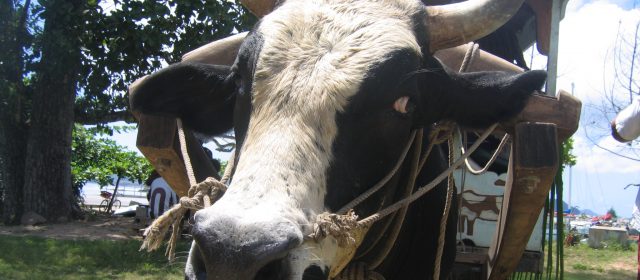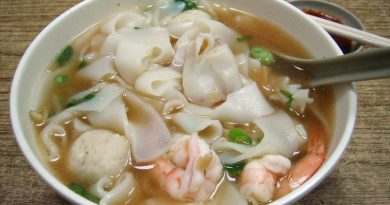The Story of Beef
The tradition of eating beef has passed down generations to become an integral part for many of our regular diets. By providing precious protein, packed with fatty calories beef has come be regarded as an important ingredient for human survival. Here, we look at the ever-changing role of beef and it’s interesting history.
Ancient Beef
Beef has been a staple meat eaten around the world for millennia, dating back as far as prehistory. Cattle originated in the Old World, having been domesticated around 8000 BC when the material gains from the livestock became apparent. It is difficult to estimate the precise point where beef became a cooked delicacy, although it probably shortly followed the domestication of cattle. Following this, people were able to identify specific breeds suited to being used for their meat or dairy produce such as milk and cheese.
The British Beef Breeders
Beef consumption and farming has existed in Britain for a long time and the country is considered to be a pioneer in beef breeding. Britain is home to several cattle breeds, which serve different functions. These include the Aberdeen Angus, arguably Britain’s most widely-known cattle breed, known for its high-quality beef. The Hereford is another particularly notable breed, which exemplifies the innovative breeding techniques developed by the British
The Spanish Bring the Cow to the Andes
Despite its prevalence in the Americas today, Cattle was not endemic to the continent and was very much a European export. The Spanish are known to be the first exporters of the cow to the Americas. Christopher Columbus is credited with introducing cattle to the conflict in 1493, introducing the species to the modern-day Dominican Republic. Cattle quickly spread throughout Mexico and modern-day Texas as the Spanish colonial interest in the Americas expanded, laying the foundation for the famous Texan Longhorn breed.
Gauchos
The concept of the Gaucho dates back to the late 19th Century and remain national symbols in a number of Latin American countries, especially Argentina. They are not dissimilar to the American cowboys, essentially skilled horsemen known for being gifted in cattle driving. A sense of mythology soon developed around the Gaucho, like with cowboys in America, as they became romanticised figures and eventually cultural symbols.
 Cowboys and Cattle Drives
Cowboys and Cattle Drives
The Cowboy is one of the most potent and widely-recognised symbols of Americana, bearing several similarities to Gauchos despite different aesthetic iconography. Cowboys arose to cultural prevalence in the 19th Century, known mainly for the vast cattle drives from Texas, the country’s main source of cattle to Chicago, the heart of the meat-packing industry and a hub for beef demand. This process emerged in the mid-19th Century. It is believed that a single herd of cattle numbered around 3,000 cows. As the population of the country grew and demand became more evenly spread across the country, the age of cattle drives and the cowboy by extension came to an end. Despite this, the cowboy remains permanently ingrained as a symbol of American popular culture, romanticised in the same way as the Gauchos in Latin America.
How good is it for you? Grain fed versus grass fed
Beef’s best-known health benefits are its rich source of protein. Despite this, it would be incorrect to describe beef and other forms of Red Meat as healthy. It is believed that the excessive consumption of red meat increases the risk of certain cancers, particularly that of the bowel. Furthermore, it is also believed that excessive consumption has a detrimental effect on the heart and can increase the risk of cardiovascular disease. While there has been debate over whether grass-fed beef is more healthy than terrain-fed beef, there is little conclusive scientific evidence to support this. However, grass-fed beef is treated better, reared in more open spaces. From a moral standpoint, and in terms of quality, grass-fed beef is normally the better option.
Japanese Beef
While the superior beef breed is a matter of debate and personal preference, there is much to be made of the quality of Japanese beef, which many associate with a sense of prestige. The two most notable meats are Wagyu and Kobe, the latter being particularly notable. While Japanese cattle has its origins in China, the breeding innovations are wholly their own. Kobe Beef is the best known, a delicacy renowned for its flavour and texture. Kobe and several other kinds of Japanese beef are imported throughout the world, vaunted by many for their quality.
The Beef Industry Today
Beef is consumed around the world in the present day as the third most widely-consumed meat after poultry and pork. There is a near-universal, thriving market for the industry today. The United States, Brazil and China are the world’s largest consumers of the meat, with little to separate them in terms of consumption. Brazil and Australia are the world’s largest producers and exporters of beef. Beef is central to the economy of Latin America since its introduction by the Spanish. The industry has evolved exponentially and grown increasingly complex since its early popularity. Despite this, health concerns about the negative effects of beef consumption are becoming increasingly clear and well-documented. Although this shows no sign of halting the beef industry in the present day, it perhaps points to a future where the meat is less widely-consumed.




